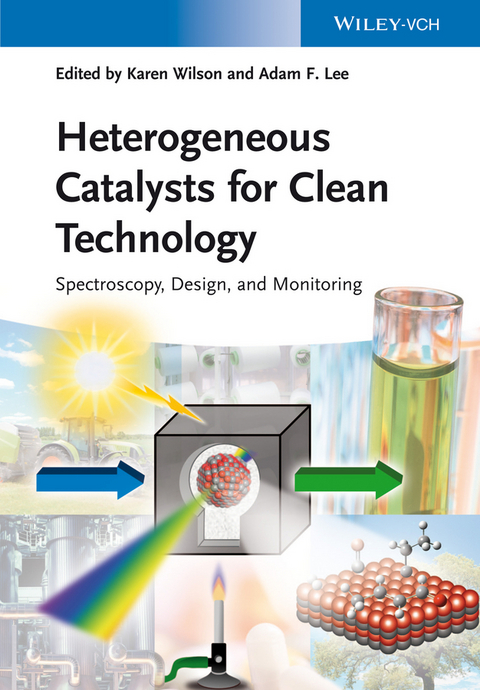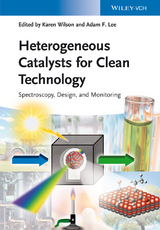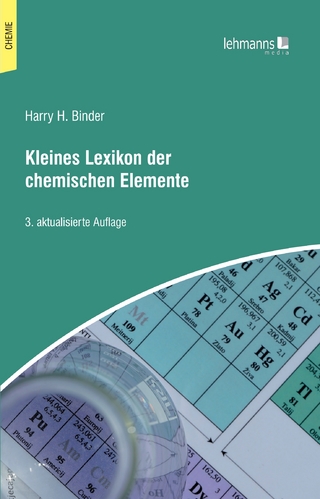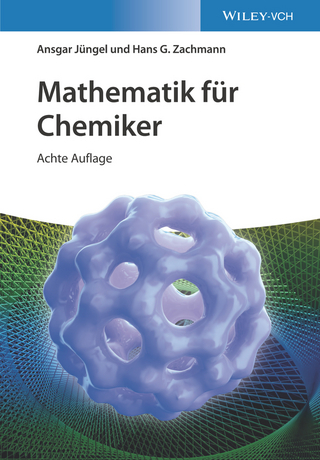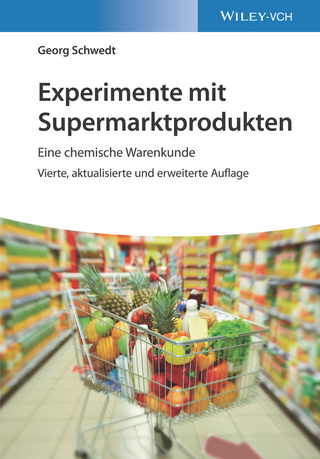Heterogeneous Catalysts for Clean Technology
Wiley-VCH (Verlag)
978-3-527-33213-7 (ISBN)
Reactive, but not a reactant. Heterogeneous catalysts play an unseen role in many of today's processes and products. With the increasing emphasis on sustainability in both products and processes, this handbook is the first to combine the hot topics of heterogeneous catalysis and clean technology.It focuses on the development of heterogeneous catalysts for use in clean chemical synthesis, dealing with how modern spectroscopic techniques can aid the design of catalysts for use in liquid phase reactions, their application in industrially important chemistries - including selective oxidation, hydrogenation, solid acid- and base-catalyzed processes - as well as the role of process intensification and use of renewable resources in improving the sustainability of chemical processes. With its emphasis on applications, this book is of high interest to those working in the industry.
Karen Wilson graduated in1992 from the University of Cambridge with a BA in Natural Sciences, and obtained an MSc with distinction in heterogeneous catalysis in 1993 from the University of Liverpool. She returned to Cambridge (1993-98) where she undertook both PhD and post-doctoral research in heterogeneous catalysis and surface science with Prof. Richard Lambert. In 1998 she moved to the University of York, to pursue post-doctoral research on the development of new mesoporous solid acids for clean technologies with Prof. James Clark, and was subsequently appointed to a lectureship at York in 1999. Dr Wilson was promoted to Senior Lecturer in 2007, prior to her appointment in 2009 as a Reader in Physical Chemistry at Cardiff University. She is currently a Royal Society Industry Fellow working with Johnson Matthey. Her research interests lie in the design of heterogeneous catalysts for clean chemical synthesis, particularly the design of tuneable porous materials for sustainable biofuels and chemicals production. Adam F. Lee obtained a BA in Natural Sciences and a PhD in surface science and catalysis from the University of Cambridge, and was appointed a Lecturer in Physical Chemistry at the University of Hull in 1997. After moving to the University of York and promotion to Senior Lecturer, he was appointed Professor of Physical Chemistry at Cardiff University in 2009, where he is a senior member of the Cardiff Catalysis Institute and also holds an EPSRC Leadership Fellowship. His research spans heterogeneous catalysis, nanoporous solids, green chemistry and synchrotron science, in which he has authored over 130 articles. Professor Lee was awarded the 2000 CR Burch Prize by the British Vacuum Council, the 2004 Fonda-Fasella Prize of the Elettra synchrotron, the 2011 McBain Medal of the Royal Society of Chemistry and Society of Chemical Industry, and 2012 Beilby Medal of the Royal Society of Chemistry, IOM3 and Society of Chemical Industry for outstanding contributions in the field of heterogeneous catalysis and surface science.
INTRODUCTION TO CLEAN TECHNOLOGY AND CATALYSIS
Green Chemistry and Clean Technology
Green Chemistry Metrics
Alternative Solvents
Heterogeneous or Homogeneous
Alternative Energy Reactors for Green Chemistry
Concluding Remarks
MECHANISTIC STUDIES OF ALCOHOL SELECTIVE OXIDATION
Introduction
Metal-Catalyzed Alcohol Selox
Oxide, Sulfide, and Vanadate Catalysts
Solvent Selection
In Situ and Operando X-Ray Studies of Selox Catalysts
Conclusions
REACTION MONITORING IN MULTIPHASE SYSTEMS: APPLICATION OF COUPLED IN SITU SPECTROSCOPIC TECHNIQUES IN ORGANIC SYNTHESIS
Introduction
Method Coupling
Spectroscopic Reactors and Practical Aspects
Selected Examples of Use
Conclusion and Outlook
IN SITU STUDIES ON PHOTOCATALYTIC MATERIALS, SURFACE INTERMEDIATES, AND REACTION MECHANISM
Introduction
In Situ Investigations
Concluding Remarks
ENANTIOSELECTIVE HETEROGENEOUS CATALYSIS
Introduction
Strategies for the Creation of Enantioselective Heterogeneous Catalysts
Concluding Remarks - A Comparison of the Various Approaches to Heterogeneous Enantioselective Catalysts
MECHANISTIC STUDIES OF SOLID ACIDS AND BASE-CATALYZED CLEAN TECHNOLOGIES
Introduction
New Catalytic Systems
Biomass Conversions
Summary
SITE-ISOLATED HETEROGENEOUS CATALYSTS
Introduction
Assembled Monolayers of Metal Complexes on Single-Crystal Surfaces
Reaction-Induced and Photoinduced Formation of Unsaturated Ru Complexes Supported on SiO2 Surfaces
Manganese Triazacyclononane Catalysts Grafted under Reaction Conditions
Well-Defined Silica-Supported Mo-Imido Alkylidene Complexes for Metathesis
Double Catalytic Activation Using a Bifunctional Catalyst with both Acid and Base on Solid Surfaces
Summary
DESIGNING POROUS INORGANIC ARCHITECTURES
Introduction
Templated Methods for the Preparation of Ordered Porous Materials
Hierarchical Porous Materials
Concluding Remarks
TAILORED NANOPARTICLES FOR CLEAN TECHNOLOGY - ACHIEVING SIZE AND SHAPE CONTROL
Introduction
Size Effects-Setting the Scene
Size Effects Illustrated by Way of Examples of Selected Industrially Important Reactions
Shape Effects
Conclusion
APPLICATIO OF METAL-ORGANIC FRAMEWORKS IN FINE CHEMICAL SYNTHESIS
Metal-Organic Frameworks as Heterogeneous Catalysts
Applications in Carbon-Carbon Bond Formation
Applications in Oxidation, Carbon-Oxygen, and Carbon-Nitrogen Bond Formation
Applications in Asymmetric Synthesis
Concluding Remarks
PROCESS INTENSIFICATION FOR CLEAN CATALYTIC TECHNOLOGY
Introduction
Effect of Transport Phenomena on Heterogeneous Catalysis
Conclusion
RECENT TRENDS IN OPERANDO AND IN SITU CHARACTERIZATION: TECHNIQUES FOR RATIONAL DESIGN OF CATALYSTS
Introduction
Catalyst Nascence
Synthesis of Silicalite-1 Molecular Sieves
Preparation of Supported Metal Catalysts
Catalyst Life
Elucidating the Reaction Mechanism of Aerobic Oxidation of Benzyl Alcohol
Determination of the Active Sites in Aerobic Oxidation of Benzyl Alcohol
Catalyst Death
Methanol to Hydrocarbons
Propane Dehydrogenation
Summary and Conclusions
APPLICATION OF NMR IN ONLINE MONITORING OF CATALYST PERFORMANCE
Online Monitoring with NMR Spectroscopy
Quantitative NMR Spectroscopy in Technical Samples
Flow and High-Pressure NR Spectroscopy for Reaction Monitoring
Selected Applications of NMR in Online Monitoring of Catalyst Performance
Conclusions
AMBIENT-PRESSURE X-RAY PHOTOELECTRON SPECTROSCOPY
Introduction
Technical Aspects
Applications of APXPS
Outlook
| Erscheint lt. Verlag | 23.10.2013 |
|---|---|
| Verlagsort | Weinheim |
| Sprache | englisch |
| Maße | 170 x 244 mm |
| Gewicht | 1231 g |
| Themenwelt | Naturwissenschaften ► Chemie ► Allgemeines / Lexika |
| Naturwissenschaften ► Chemie ► Physikalische Chemie | |
| Technik | |
| Schlagworte | catalysis • Chemie • Chemistry • Heterogene Katalyse • Katalysator • Katalyse • Nachhaltige u. Grüne Chemie • Physical Organic Chemistry • Physikalische Organische Chemie • spectroscopy • Spektroskopie • Sustainable Chemistry & Green Chemistry • Sustainable Chemistry & Green Chemistry |
| ISBN-10 | 3-527-33213-8 / 3527332138 |
| ISBN-13 | 978-3-527-33213-7 / 9783527332137 |
| Zustand | Neuware |
| Haben Sie eine Frage zum Produkt? |
aus dem Bereich
